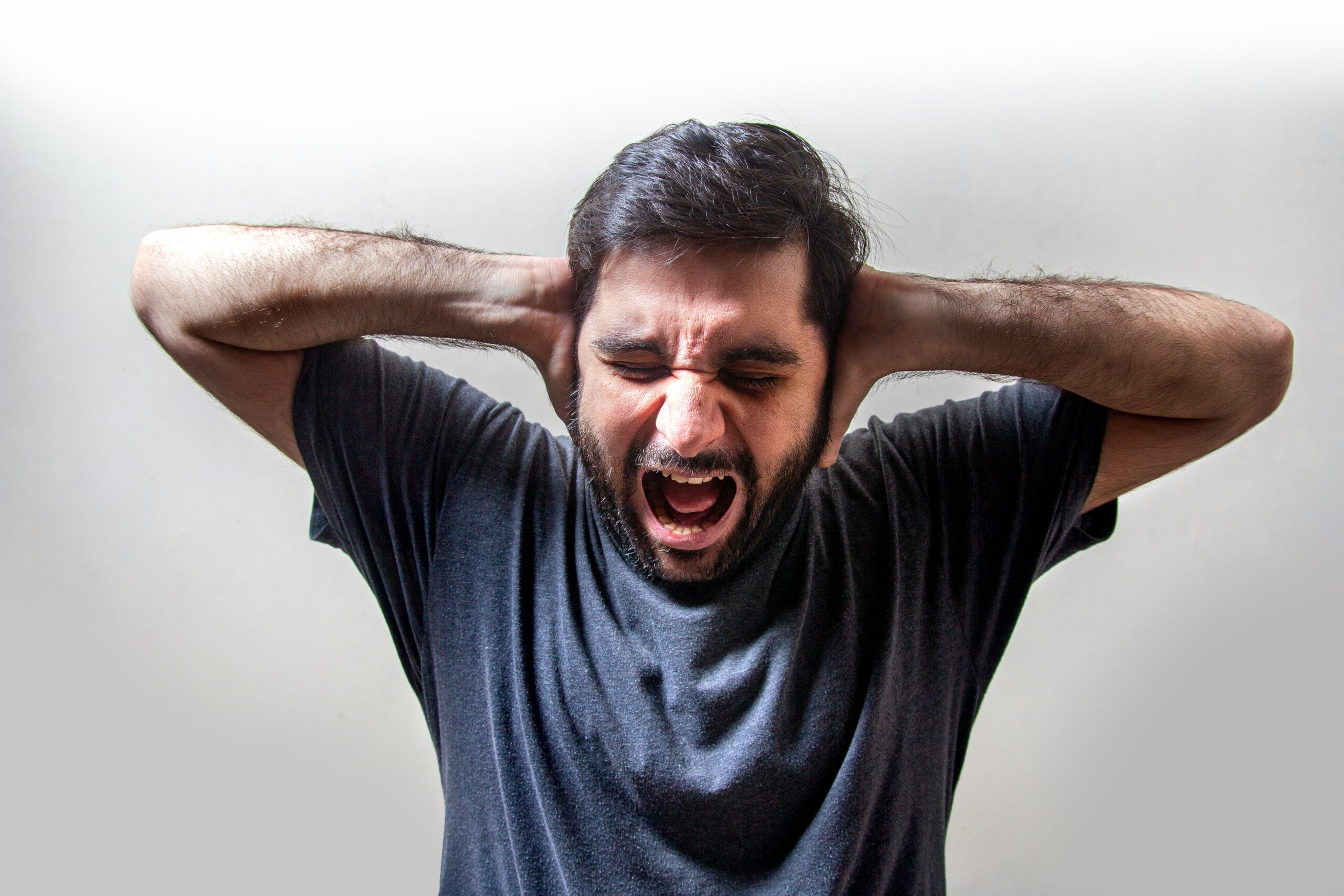What Really Happens to Your Body During a Panic Attack – And How to Calm It Fast
Imagine yourself working normally at home or in the office, and suddenly you feel your chest tightening, your heart pounding, and your breath feeling shallow all at once. This bizarre condition is what many people refer to as a panic attack. Some people mistake a panic attack for a heart attack, but it’s not like that. Understanding what really happens to your body during a panic attack can take away some of the fear and help you respond more effectively.
Panic attacks may feel like a life-threatening experience, but the truth is that they are just your body’s exaggerated response to stress. According to the American Psychological Association, nearly 1 in 3 adults experiences at least one panic attack in their lifetime. So let’s break down the physical and emotional changes your body goes through during a panic attack, and some quick ways to calm it fast.
If you want to read more health-related articles, visit Healnology and enjoy your reading experience.
What Really Happens to Your Body During a Panic Attack
Although most people go through this condition but few people actually know the science behind panic attacks. To respond quickly to this attack, it’s important to know what really happens to your body during a panic attack.
When a panic attack happens, your brain signals your body to activate the fight-or-flight response. This response is actually an ancient mechanism where your brain mistakenly detects harmless signals as threats and increases adrenaline in your body.
Hence, your heart starts pounding to pump more blood to the muscles, your breathing becomes rapid to take in extra oxygen, and your digestive system slows down because survival is prioritized over digestion. These changes explain why the experience feels so physical.
Psychiatrist Dr. Judson Brewer explains, “The brain’s fear center — the amygdala — gets hijacked during a panic attack. It sends out danger signals even when there is no actual threat, and the body reacts as if it’s in real danger.” This explains why people often feel like they are dying or losing control during the episode.
Physical Changes in Your Body
Panic attacks have symptoms that are severe and can mimic critical medical conditions. Some people experience chest tightness or heart pounding, which makes them think they are having a heart attack. Rapid breathing can reduce carbon dioxide levels in the blood, leading to dizziness. Other symptoms may include sweating, trembling, and nausea. The American Heart Association emphasizes that chest pain should never be ignored until ruled out by a doctor.
Dr. Reid Wilson, an anxiety specialist, says, “The sensations of panic are powerful but harmless. Understanding that the body is simply overreacting to a false alarm is the first step toward reducing fear.”
Psychological Impact
The mental impact of a panic attack is just as overwhelming as the physical. Many people report feeling like they are losing control, going crazy, or even dying. Others describe an intense sense of detachment from reality, known as derealization, or from themselves, called depersonalization. The National Institute of Mental Health (NIMH) notes that these emotional symptoms are often what make panic attacks so disturbing.
According to Dr. Ellen Hendriksen, a clinical psychologist, “The scariest part of a panic attack is the misinterpretation of symptoms. People assume they’re in real danger when their body is simply trying — and failing — to protect them.”
When to Seek Medical Attention
If you’re experiencing frequent panic attacks or you are afraid of the next one, it may be a panic disorder. In such cases, it’s important to seek medical help right away. According to the Mayo Clinic, diagnosis and treatment can help prevent panic from taking over your life.
You can also read our article on Silent Signs of High Blood Pressure You Shouldn’t Ignore, since panic symptoms are often confused with heart conditions.
How to Calm a Panic Attack Fast
However, a panic attack might seem unbearable at the time of its happening, but as we muster up some courage and practice these techniques, we can regain control really fast:
Mastering Breathing Techniques
Okay, so controlled breathing is one of the fastest ways to calm a panic attack. When you constantly try to slow down your rising breath, you’re sending signals to your nervous system that the danger has passed.
You can practice Box Breathing (4-4-4-4 method), where you inhale for 4 seconds, hold your breath for 4 seconds, exhale for 4 seconds, and hold for 4 seconds, repeating this cycle.
Another technique is the 4-7-8 Breathing method, where you inhale through your nose for 4 seconds, hold for 7 seconds, and exhale slowly through your mouth for 8 seconds.
Using Grounding to Break the Panic Cycle
Another method is the grounding exercises, which bring your mind back to the present. The 5-4-3-2-1 method is especially effective, as it shifts your attention from panic to sensory awareness. In this technique, you identify 5 things you see, 4 you feel, 3 you hear, 2 you smell, and 1 you taste. It is a sensory method.
Quick Lifestyle Hacks for Relief
Not techniques, but sometimes simple actions can ease the cycle of panic attacks. Splashing cold water on your face stimulates the vagus nerve, slowing your heart rate. Gentle stretching, yoga, or a brisk walk helps release built-up adrenaline. In the long run, prioritizing sleep, a healthy diet, and mindfulness can reduce overall anxiety.
The Cleveland Clinic reports that such physical tricks stimulate the vagus nerve, helping to regulate heart rate and restore calm.
Our guide on 5 Sleep Habits That Improve Anxiety and Depression shows how restorative rest can reduce panic triggers.
Treatment for Panic Disorder and Long-Term Relief
Cognitive Behavioral Therapy (CBT)
CBT is the gold standard technique for treating panic disorder. According to the American Psychological Association, this therapy rewires thought patterns and significantly lowers the recurrence of panic attacks.
Medication Options for Panic Disorder
Doctors often prescribe SSRIs or benzodiazepines depending on the severity. The National Health Service (NHS) provides clear guidance on safe medication options and what to expect.
Support Groups and Self-Help Resources
Joining peer groups can reduce isolation. Organizations like Mental Health America provide directories for both in-person and online support. Check out our list of 7 Free Mental Health Apps for Stress Relief that you can use to manage symptoms between therapy sessions.
Conclusion
Now that you’re familiar with what really happens to your body during a panic attack, the frightening symptoms make much more sense. Your racing heart, rapid breathing, and overwhelming fear are simply the body’s way of reacting to a false alarm.
While panic attacks feel life-threatening, they are not fatal, and with the right tools, you can control them. Practicing controlled breathing, grounding exercises, and lifestyle strategies can help calm panic quickly, while professional therapy offers long-term solutions.
If panic attacks are disrupting your daily life, don’t hesitate to seek medical advice. With the right approach, recovery is possible.
Dr. Ellen Hendriksen, Clinical Psychologist and Author of How to Be Yourself, says, “Panic attacks are your body’s alarm system going off at the wrong time. Once you learn how to calm your nervous system, you can retrain your brain to stop treating panic as danger.”
If this article helped you, share it with a friend who struggles with anxiety. For more practical guides on health, wellness, and lifestyle, visit Healnology and explore resources designed to support your well-being.
Related Reads
Looking to strengthen your mental and physical health while managing stress better? These guides on Healnology will help you build resilience:
- Future of Wearable Health Devices | Trends & Innovations 2025– Learn the advancements of technology in health.
- 5 Powerful Superfoods to Beat Fatigue and Boost Stamina – Discover how nutrition can fight tiredness and improve mental clarity.
- 7 Smart Devices That Can Save Your Heart in 2025 – Shows how you can digitally track your heart’s health.
- How to Manage Stress for Better Physical Health – Improve your stress symptoms, which is crucial for calming panic attacks fast.
❓ Frequently Asked Questions About Panic Attacks
During a panic attack, your body’s “fight-or-flight” system goes into overdrive. Stress hormones like adrenaline cause your heart to race, breathing to quicken, and muscles to tense. While frightening, these physical changes are not dangerous.
Techniques like box breathing, the 4-7-8 method, and the 5-4-3-2-1 grounding technique can quickly calm your nervous system. Many people also find relief in mindfulness apps, journaling, or short walks outdoors.
A panic attack can feel like a heart attack, but research shows it does not damage the heart in healthy individuals. If chest pain persists or you’re unsure, always consult a doctor.
If panic attacks are frequent, disrupt daily life, or cause constant worry, talk to a mental health professional. Treatments like Cognitive Behavioral Therapy (CBT) and medications are highly effective.







